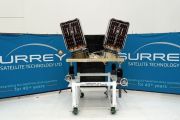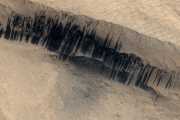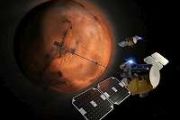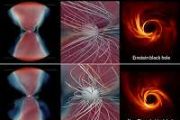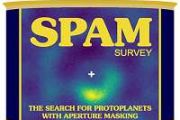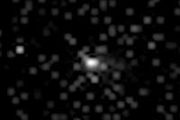
Copernical Team
Arecibo Observatory scientists publish major study on near-earth asteroids
 The largest paper ever published on radar observations of near-Earth asteroids has been released, compiling years' worth of data from the Arecibo Observatory in Puerto Rico.
Using delay-Doppler radar observations collected from the observatory between December 2017 and December 2019, the study includes 191 asteroids' radar cross sections and Doppler-frequency broadening. This data can be u
The largest paper ever published on radar observations of near-Earth asteroids has been released, compiling years' worth of data from the Arecibo Observatory in Puerto Rico.
Using delay-Doppler radar observations collected from the observatory between December 2017 and December 2019, the study includes 191 asteroids' radar cross sections and Doppler-frequency broadening. This data can be u Trying to Avoid Nodules: Sols 3633-3634
 The long Sol 3631 drive went well, leaving the rover near exposures of nodule-rich bedrock. Because we have examined the chemical composition of nodules recently, a goal for today's planning was to find patches of bedrock that are relatively nodule-free in order to look for changes in the "background" bedrock.
So the Sol 3633 plan starts with a couple APXS integrations on "Balata," a bedro
The long Sol 3631 drive went well, leaving the rover near exposures of nodule-rich bedrock. Because we have examined the chemical composition of nodules recently, a goal for today's planning was to find patches of bedrock that are relatively nodule-free in order to look for changes in the "background" bedrock.
So the Sol 3633 plan starts with a couple APXS integrations on "Balata," a bedro NASA Lucy spacecraft captures moon images and 'Terminator Mosaic'
 NASA's Lucy spacecraft has captured new high resolution images of the Moon's Central Highlands surface taken while the spacecraft was between Earth and the Moon.
The Oct. 16 images were taken approximately 140,000 to 160,000 miles from the moon after Lucy flew by the Earth for its first of three gravity assists, the space agency said. They included a "Terminator Mosaic," as well as sing
NASA's Lucy spacecraft has captured new high resolution images of the Moon's Central Highlands surface taken while the spacecraft was between Earth and the Moon.
The Oct. 16 images were taken approximately 140,000 to 160,000 miles from the moon after Lucy flew by the Earth for its first of three gravity assists, the space agency said. They included a "Terminator Mosaic," as well as sing Thermal control designs keep astronauts cool on space station
 For astronauts, staying cool and comfortable on China's Tiangong space station is no problem. The station orbits Earth in about 90 minutes at an altitude of 400 km. It experiences large fluctuations in temperature, ranging from 150 degrees Celsius when the station is exposed to the sun to minus 100 degrees Celsius when over the night side of the planet. So how to protect station residents from e
For astronauts, staying cool and comfortable on China's Tiangong space station is no problem. The station orbits Earth in about 90 minutes at an altitude of 400 km. It experiences large fluctuations in temperature, ranging from 150 degrees Celsius when the station is exposed to the sun to minus 100 degrees Celsius when over the night side of the planet. So how to protect station residents from e PickNik Robotics wins Space Force contract for on-orbit capture
 PickNik Robotics has won a SpaceWERX contract to work on robotics for the US Space Force. In addition, the company recently won a NASA Small Business Innovation Research (SBIR) Phase I contract for continued work on supervised autonomy for space robotics, as well as a Colorado Advanced Industries Accelerator (AIA) grant for space robotics.
"These three wins provide additional validation of
PickNik Robotics has won a SpaceWERX contract to work on robotics for the US Space Force. In addition, the company recently won a NASA Small Business Innovation Research (SBIR) Phase I contract for continued work on supervised autonomy for space robotics, as well as a Colorado Advanced Industries Accelerator (AIA) grant for space robotics.
"These three wins provide additional validation of Airbus and Salam join forces for High Altitude Platform Station connectivity services
 Airbus' HAPS Connectivity Business has signed a strategic partnership with Salam, a leading Saudi telecommunications and ICT company and part of the Mawarid Media and Communications Group (MMCG), to progress the development of private networks, IoT applications, disaster management solutions and other connectivity and high-altitude Earth observation services from the stratosphere to serve the Ki
Airbus' HAPS Connectivity Business has signed a strategic partnership with Salam, a leading Saudi telecommunications and ICT company and part of the Mawarid Media and Communications Group (MMCG), to progress the development of private networks, IoT applications, disaster management solutions and other connectivity and high-altitude Earth observation services from the stratosphere to serve the Ki Spice innovation for Earth with the SeRANIS mission
 LuxSpace, a subsidiary of space and technology group OHB SE, and the University of German Armed Forces Munich just signed a contract for the dtec.bw SeRANIS (Seamless Radio Access Network for Internet of Space) small satellite mission.
This UniBw M mission provides the world's first publicly accessible multifunctional experimental laboratory in orbit and will use the LuxSpace built Triton-
LuxSpace, a subsidiary of space and technology group OHB SE, and the University of German Armed Forces Munich just signed a contract for the dtec.bw SeRANIS (Seamless Radio Access Network for Internet of Space) small satellite mission.
This UniBw M mission provides the world's first publicly accessible multifunctional experimental laboratory in orbit and will use the LuxSpace built Triton- Claro Brasil to Extend 4G and 5G-Ready Mobile Services Across Amazon Region with SES's O3b mPOWER
 With unprecedented demand for high-powered mobile connectivity in the most isolated communities of the Amazon, SES has signed a multiyear capacity renewal with Claro Brasil, through Embratel, its corporate solutions division, to enable the delivery of enhanced 4G/5G-ready services via its O3b mPOWER network, SES's next-gen medium earth orbit (MEO) communications system, in at least eight of 23 c
With unprecedented demand for high-powered mobile connectivity in the most isolated communities of the Amazon, SES has signed a multiyear capacity renewal with Claro Brasil, through Embratel, its corporate solutions division, to enable the delivery of enhanced 4G/5G-ready services via its O3b mPOWER network, SES's next-gen medium earth orbit (MEO) communications system, in at least eight of 23 c NASA inflatable heat shield finds strength in flexibility
 How does something that looks like a stack of orange inner tubes covered in a black tarp survive temperatures reaching 3,000 degrees Fahrenheit as it plunges through the atmosphere? An upcoming technology demonstration uses advanced materials to make a heat shield that's tougher than it looks.
Hypersonic Inflatable Aerodynamic Decelerator (HIAD) technology has been in development for more
How does something that looks like a stack of orange inner tubes covered in a black tarp survive temperatures reaching 3,000 degrees Fahrenheit as it plunges through the atmosphere? An upcoming technology demonstration uses advanced materials to make a heat shield that's tougher than it looks.
Hypersonic Inflatable Aerodynamic Decelerator (HIAD) technology has been in development for more UCF researcher receives NASA award to develop revolutionary rocket engine technology
 A University of Central Florida researcher has received NASA funding to further develop a novel rocket engine system that could revolutionize space travel.
The project focuses on rotating detonation rocket engines (RDREs), which are powered by continuous Mach 5 explosions that rotate around the inside of the engine and are sustained by hydrogen and oxygen propellants fed into the system in
A University of Central Florida researcher has received NASA funding to further develop a novel rocket engine system that could revolutionize space travel.
The project focuses on rotating detonation rocket engines (RDREs), which are powered by continuous Mach 5 explosions that rotate around the inside of the engine and are sustained by hydrogen and oxygen propellants fed into the system in 







